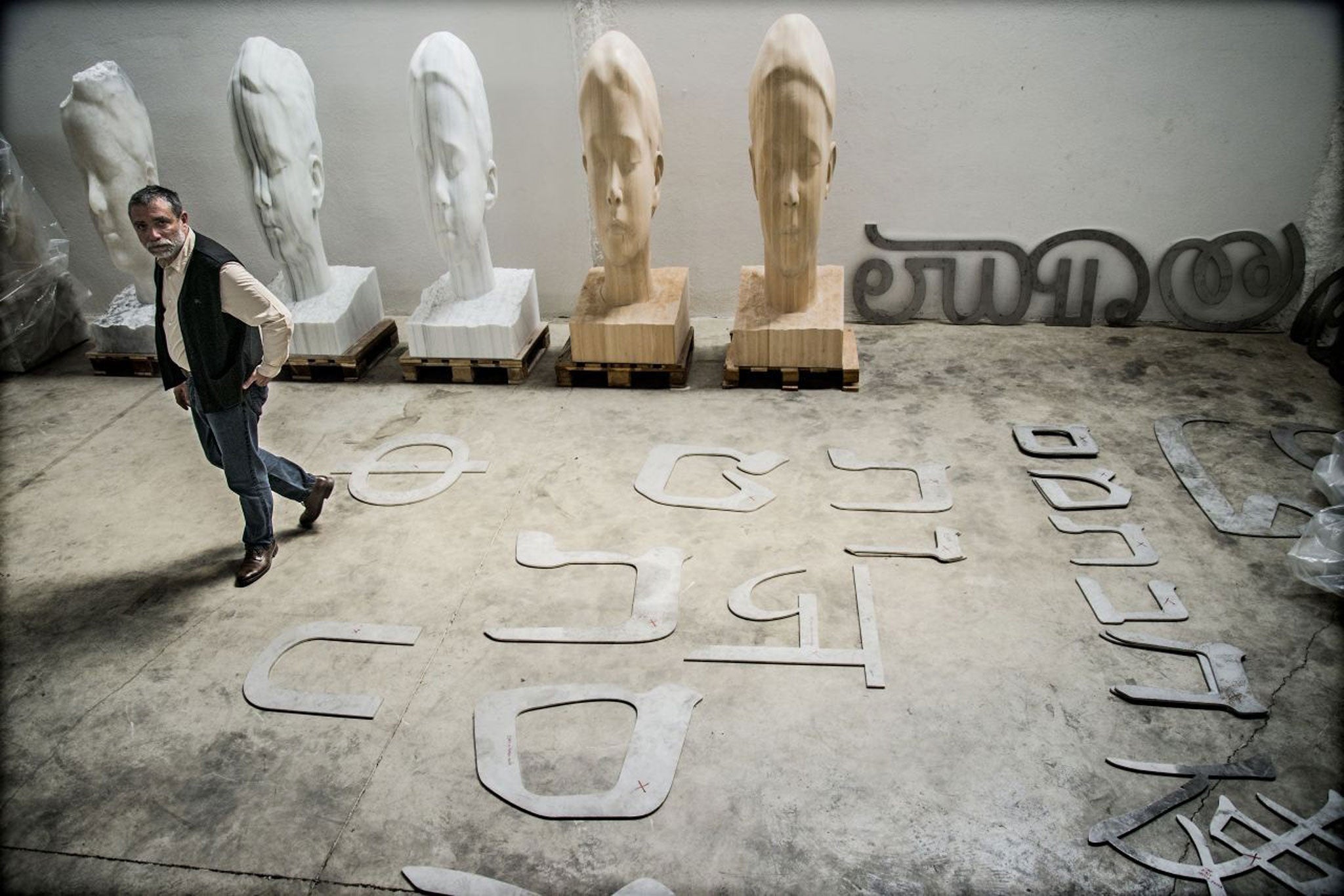Jaume Plensa, sculptor: 'A stone can represent the universe. A boulder that nature has created'
Karen Wright meets the artist in his studio in Baix Llobregat

Jaume Plensa works on an unprepossessing industrial estate in Baix Llobregat, a suburb west of Barcelona, the city where he was born in 1955. He has lived abroad in Paris, Berlin and New York, but has now returned to the city. He has been in this space for 20 years, moving from his previous central studio. He prefers the anonymity of this location, close to the airport and "a little apart from Barcelona's cultural life".
His father was a businessman and Plensa recalls: "I grew up in a house where my father was a dedicated reader and I remember growing up surrounded by books." Plensa's father also loved music and played the piano as well as listening to music.
Plensa remembers hiding in the old upright instrument with a small space perfect to contain him. He recalls the smell of the felt, the dust and the vibration of the music that filled his body. The books around him instilled his love of words and the sense of enclosure still intrigues him in his work.
The studio employs eight full-time people, although he says many of them are concerned with crating and shipping the work. Plensa was invited by the Benedictine monks of San Giorgio Maggiore to install his sculpture in the wonderful Palladian church they call their home, an opportunity that he had to accept. "I have no specific religion. I trust in spirituality." He says that the monasteries of the Benedictines with their motto of pray and work inspires him.
Being in the studio has made me understand this sculptor's work better. In the past his large works were often physically composed of recognisable fragments of text, a quote from Shakespeare's Macbeth being the first. Now they have become more abstract, formed of symbols drawn, he tells me, of characters from nine alphabets. "It is very dynamic, the difference of letters in terms of shapes and thickness, when you compare them".
In Venice there will also be solid monumental marble portraits made in his own personal geometry and perspective that he has developed "to deal with scale".
As I leave the studio, I pause before a pile of boulders from the mountains around Barcelona. Plensa tells me that his friends phone him when they find them and he arranges to collect them from wherever. "A found stone can represent the universe. A boulder that nature has created, the time the rain and the wind are changing the shape."
On one a super-sized figure crouches, formed of abstract letters. An assistant lifts off the plastic so I can see more of the image. Plensa's words fill my ears: "Time is my main assistant. He did 50 per cent of it and then I did the rest."
Subscribe to Independent Premium to bookmark this article
Want to bookmark your favourite articles and stories to read or reference later? Start your Independent Premium subscription today.

Join our commenting forum
Join thought-provoking conversations, follow other Independent readers and see their replies